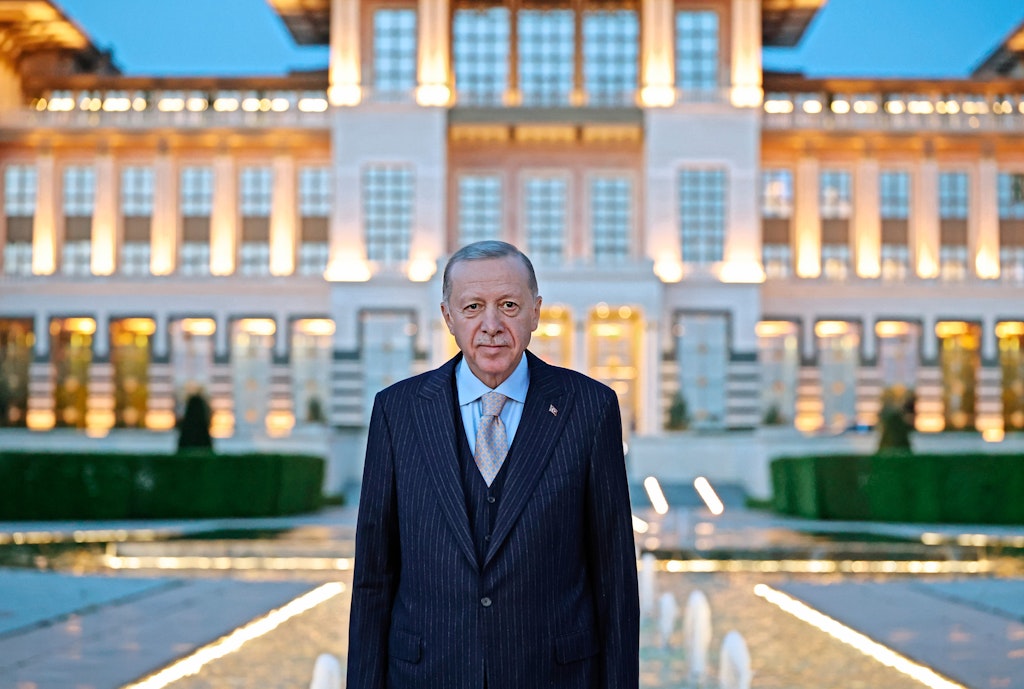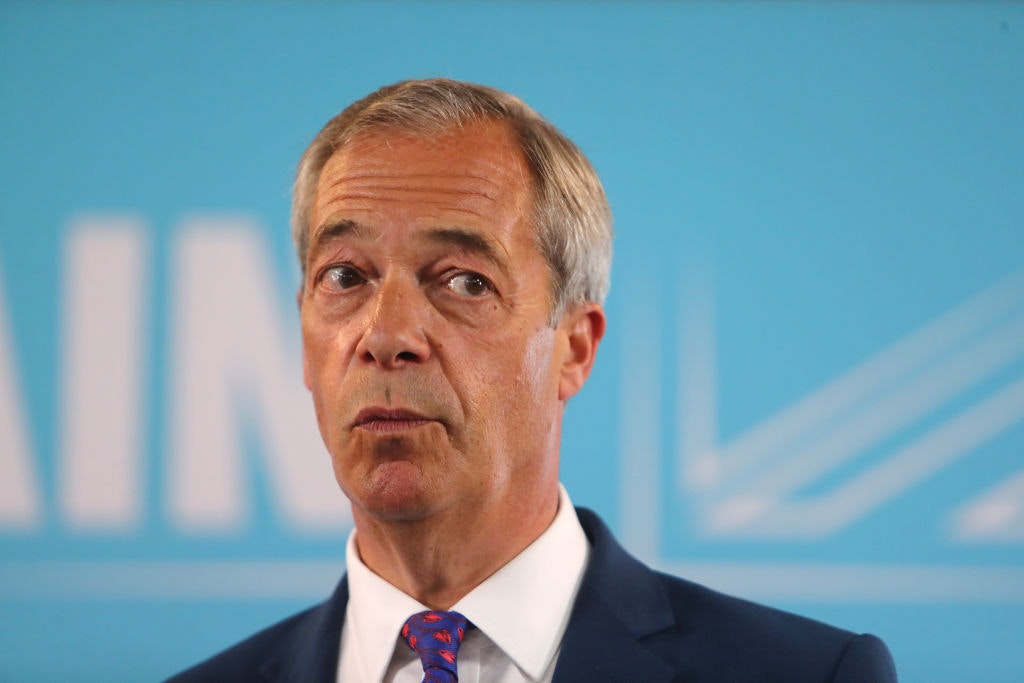Pushing the boundaries
The map of the world is likely to be redrawn, thanks to the decline of post war Pax Americana, an expansionist Russia and China, and the push for ethnic sovereignty
This article is taken from the May 2024 issue of The Critic. To get the full magazine why not subscribe? Right now we’re offering five issues for just £10.
At the heart of the West’s response to Russia’s invasion of Ukraine in February 2022 was anger that Putin was attempting to do something that was widely assumed to have been consigned to history. “The use of force and coercion to change borders has no place in the twenty-first century,” reported the European Council as it brought in sweeping sanctions against the Russian state.
But in many parts of the world, borders are not set in stone, now nor in the past. Secession, annexation, unification, dissolution and all the other modes of changing borders have long been weapons of war. Indeed, the last 110 years — particularly as a result of the two world wars — have been marked by changes to national boundaries that generally coincided with the interests of the major powers of the day.
During the Cold War, the US and Soviet Union encouraged the break-up of the Europeans’ overseas empires as a means of cutting them down to size, even as they froze the borders in Europe. But a new phase of border realignment started in the 1990s. This was driven mainly by the break-up of the Soviet Union and ethnic nationalism, but changes (particularly in the Balkans) were also a result of a now unchallenged United States pushing for boundary alterations. Washington recognised the independence of groups such as the Ukrainians, Czechs and Kosovo Albanians, agreed to the two Germanys uniting and backed the EU’s expansion eastwards.
★
At the same time, groups such as the Bosnian Serbs and Macedonian Albanians, whose independence the US opposed, had their revisionist aspirations blocked in the name of territorial integrity, a supposed international norm. Yet the truth is that there is no universalist moral underpinning the concept of national integrity. Instead, much of the world considers current borders to be a Western imposition, whether it be the Sykes–Picot lines of the Middle East, or African countries where traditional tribal lines have been cut across.
China has been gradually changing its borders for some years
Now, as American hegemony declines, so the world enters a new phase of border changes. The West’s adversaries and competitors see no issue with challenging existing borders if they do not suit their own interests.
★
China has been gradually changing its borders for some years. Initially, this involved the annexation of Macau and Hong Kong, in line with international treaty agreements. More controversially, Beijing has also claimed the whole of the South China Sea, backed up by the construction of artificial islands to cement its position. Russia has also been redrawing the map. In 2008 it seized parts of Georgia, an American client in its near-abroad which had sought to join NATO. Then, in 2014, it occupied the Donbas and detached Russian-populated Crimea from Ukraine.
Staunchly anti-American Venezuela, meanwhile, has reopened a century-old border dispute with Guyana, laying claim to almost three quarters of its neighbour’s oil-rich territory. The UK dispatched a warship in a show of support for its former colony.
It isn’t just the West’s adversaries who are looking to change the status quo. Turkey, a NATO member, has taken advantage of America’s international retreat to consolidate what it sees as an independent state in Northern Cyprus. This gives a solid advantage to Ankara, facilitating access to the surrounding sea in which huge reserves of oil and gas have been discovered. In the Mediterranean, it has also laid claim to a corridor of sea between Turkey and Libya which disregards Greece’s recognised maritime boundaries.
The underlying causes of this increasing pressure on existing borders are more complex than simply American decline and the rise of non-Western rivals. For one thing, the EU is also perceived to be weakened following a decade of crises.
In Hungary, Victor Orban has intensified demands about the rights of Hungarians living abroad, including that Ukraine give more autonomy to its Magyar minority. Further south, Brussels’ one-time goal of integrating the whole of the Balkan nations within the EU has been forgotten, thereby encouraging dissatisfied groups such as the Serbs and Croats of Bosnia.
Moscow has actively encouraged Balkan revisionism by its regional ally Belgrade, which simultaneously wants to attach the Serbian part of Bosnia (Republika Srpska) to Serbia proper whilst preventing the loss of Kosovo, or at least the Serb-populated northern part of it. To complicate matters further, the Russian Federation itself appears to be in long-term decline, not just demographically. It faces increased support for varying levels of self-determination from ethnic minority groups, including Chechens, Tatars, Bashkirs, Nogais, Circassians, Karelians and Cossacks, some of whom may try to seize their chance in an eventual post-Putin order.
Russia is already facing challenges in its near abroad. Turkey has recently helped its client Azerbaijan consolidate its territory at the expense of Russian-backed Armenia. In the east, Japan has revitalised its claims to the Kuril Islands taken by the Soviet Union in 1945. Poland, a rising power to Russia’s west, has its eyes on the stranded enclave of Kaliningrad, which it officially renamed Królewiec last year; some assume that this was made in anticipation of its prospective detachment from Russia and incorporation into Poland itself.
★
Perhaps most worryingly for the long-term integrity of Russia are the ambitions of China. The Chinese Communist Party (CCP) has spent its entire time in power railing against the so-called “unequal treaties” that China was forced to sign with European powers in the 19th century. Today only one is left, that which was signed with Russia in 1860 and ceded to Moscow a million square kilometres of land around Vladivostok. Chinese nationalists want this back.

The power certainly rests with Beijing, with an economy now eight times larger than its northern neighbour, and more than a hundred million people living in the provinces next to the border versus eight million in the whole Russian Far East. No matter what the terms of the “friendship without limits” signed between Presidents Putin and Xi, the question of land ownership there is likely to be visited at some point in the future, especially if Russia materially weakens further.
More nakedly, Beijing has Taiwan in its sights. The CCP considers the island to be a renegade province and has set its stall at reunification, even though most Taiwanese reject the notion. The consequences of a forced move to reunify — whether through invasion or economic blockade — would be catastrophic for the world economy given the importance of the island to the global supply of both microchips and other electronics.
Even though the US has no formal obligation to defend the island if attacked, President Biden has repeatedly insisted that his administration would come to Taiwan’s aid in the event of an invasion. With senior Japanese officials, including the late Prime Minister Shinzo Abe, saying that their country would not stand by if China moved against Taiwan, the maintenance of Taiwan’s independence threatens to turn any conflict with China into a regional, if not world event.
★
Taiwan is just one national boundary that Washington is determined to uphold. Following Russia’s invasion of Ukraine, the US has intensified pressure on Serbia to accept the independence of Kosovo, which Belgrade has long refused to recognise, out of concern the breakaway country’s continued state of limbo gives Russia undue leverage in a strategic corner of Europe.
That is not to say Washington won’t support changing the map if it thinks it is in its interests to do so. President Trump once floated the idea of the US acquiring Greenland from Denmark. In a more serious move, he also recognised Israel’s desire to redraw the map by recognising Israel’s long-standing claim on the Golan Heights and Jewish settlements in the West Bank in 2019, to shore up a local ally against a Russian-backed Syria.
Today there are more than 100 internationally acknowledged border disputes across the globe, ranging from the violent to the dormant, on both sea and land. Such is the level of geopolitical instability and the ambitions of China and Russia to change the world order, that it is easy to see how some of these disputes might be exacerbated for political gain.
The United Nations, whose stated charter role is to “achieve international co-operation in solving international problems”, and which has helped find solutions to territorial issues for decades, finds itself increasingly sidelined in this. The split in UN voting following Russia’s invasion of Ukraine, with the Global South falling in behind Russia (and China), shows how Washington and its allies now have a more difficult task to influence the international agenda. This will likely undermine long-term Western confidence in the UN, thus decreasing its role further.
★
The West, perhaps not being straight about its own recent actions, is unlikely to support any alterations to the map given its linking of political integrity to the international rules-based order it leads. But as its influence around the world wanes, it might not have much choice but to accept border changes.
Alternatively, politicians in North America and Europe may decide to take advantage of the situation to encourage more secession beyond the West, especially where they see the opportunity to weaken its opponents and to boost their own positions.
Of course, given the separatist movements in Belgium, Spain and France, and increasingly in the US (for example, the call for California to leave the Union), embracing secessionism would be a gamble. Either way, it is highly likely that the atlases of today will look rather different in the future, whatever the West might think it wants.
Enjoying The Critic online? It's even better in print
Try five issues of Britain’s newest magazine for £10
Subscribe














